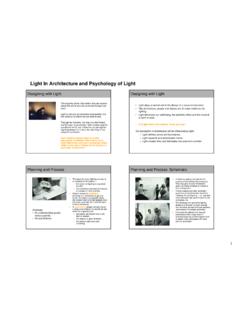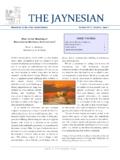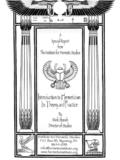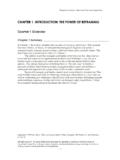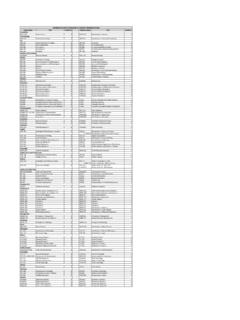Transcription of Dual-Task Interference in Simple Tasks: Data and …
1 Copyright 1994 by the American Psychological Association. Inc. Psychological Bulletin 1994. Vol. 116. No. 2. 220-244 0033-2909/94/$ Dual-Task Interference in Simple tasks : Data and Theory Harold Pashler People often have trouble performing 2 relatively Simple tasks concurrently. The causes of this inter-ference and its implications for the nature of attentional limitations have been controversial for 40 years, but recent experimental findings are beginning to provide some answers. Studies of the psychological refractory period effect indicate a stubborn bottleneck encompassing the process of choosing actions and probably memory retrieval generally, together with certain other cognitive operations.
2 Other limitations associated with task preparation, sensory-perceptual processes, and timing can generate additional and distinct forms of Interference . These conclusions challenge widely accepted ideas about attentional resources and probe reaction time methodologies. They also suggest new ways of thinking about continuous Dual-Task performance, effects of extraneous stimulation ( stop signals), and automaticity. Implications for higher mental processes are dis-cussed. For more than 100 years, psychologists have been interested in people's ability (or inability) to perform two or more activities concurrently. One reason these limitations provoke curiosity is simply that people wonder what is humanly possible.
3 This question has obvious significance for practical problems such as designing interfaces to prevent operators from becoming overloaded or predicting what a pilot can do in an emergency. There is also an important scientific reason to try to understand Dual-Task performance limitations: Overloading a system is often one of the best ways to figure out what the parts of the system are and how these parts function together. For this reason, studying Dual-Task Interference provides an important window on basic questions about the functional architecture of the brain. For certain of these questions such as whether human cognitive architecture includes a central processor Dual-Task studies may provide the only avenue of study.
4 Ordinarily, people are not aware of having much difficulty performing different activities at the same time unless the tasks are either physically incompatible ( , typing and drinking coffee) or intellectually demanding ( conversing and adding up the check in a restaurant). Casual observation of people's behavior outside the laboratory seems to support this impres-sion: People apparently have conversations at the same time they are driving, read magazines while they run exercise bicy-cles, chew gum while they walk, and so forth. It might seem, therefore, that one would have to look at rather exceptional ac-tivities to find much Dual-Task Interference .
5 Laboratory studies show just the opposite, however: Many pairs of tasks interfere with each other quite drastically, even though they are neither intellectually challenging nor physically incompatible. Support was provided by the National Institute of Mental Health (Grant 1-R29-MH45584). I am grateful to John Duncan. Clark Fagot. Gordon Logan. Michael Mozer, E ri c Ruthruff, and Steven Yantis for t he i r comments. Correspondence concerning this article should be addressed to Harold Pashler. Department of Psychology 0109, University of California at San Diego. La Jolla, California 92093. Electronic mail may be sent to Researchers studying Dual-Task performance in the laboratory have investigated tasks that differ greatly in complexity, ranging all the way from Simple reaction time (RT; "Press a button when the tone sounds") to such complex "real-world" activities as taking dictation and answering questions.
6 The present article focuses on studies at the simpler end of this continuum. Most of the tasks discussed here involve a fairly straightforward stimulus-response (S-R) mapping, and they usually take less than a second for someone to carry out. The relative simplicity of these tasks allows one to test more precise hypotheses about the causes of Dual-Task Interference than would be possible with more elaborate or time-consuming tasks . The ultimate goal of such research, however, is to illuminate complex kinds of mental activity as well as Simple laboratory tasks , and this article concludes by exploring some possible implications for a broader range of behavior.
7 This review is organized into five main sections. The first pro-vides a brief overview of some possible ways in which performing one task could interfere with performing another. The second section focuses on a form of Dual-Task Interference that is particularly amenable to dissection with behavioral measures: the so-called psychological refractory period (PRP) effect. The PRP effect is the slowing that almost invariably occurs when a person tries to perform two speeded tasks at approximately the same time. The evidence described in this section makes a fairly-strong case that two factors work together to produce PRP effects in essentially every PRP task (a "central bottleneck" and a preparatory limitation), whereas other factors contribute only under very special circumstances ( manual-control limita-tions arising when two finger responses must be made nearly simultaneously).
8 The remaining sections of the article consider a much broader range of empirical and theoretical issues in light of the conclusions derived from PRP studies. The third section discusses six other kinds of Dual-Task situations that have been studied quite extensively but differ from the PRP situation in that they do not involve two punctate speeded tasks . Several of these topics are discussed in some detail, including probe RT tasks , concurrent memory loads, and concurrent tapping. Two other topics are discussed in less detail: concurrent perceptual220 discriminations and concurrent continuous task performance. These are large fields of study that cannot be reviewed compre-hensively here: instead, the focus is on how the central bottleneck implicated by the PRP studies relates to the performance limitations observed in these two areas of research.
9 The fourth section discusses the behavioral effects of extraneous stimuli that do not require separate responses but, instead, modulate the response to a primary stimulus ( , a stimulus that signals one to abort one's response). These phenomena do not fall under the rubric of Dual-Task performance proper, but they have important implications for theories of the causes of Dual-Task Interference . The fifth section examines some broader theoretical issues, including the nature of the central bottleneck and two concepts widely used in discussing information processing generally: attention and automaticity. It is argued that although these two concepts illuminate some aspects of cognition and experience, they often obscure the most important factors that determine performance.
10 The article concludes with the question of how Dual-Task limitations in Simple tasks may be relevant to understanding human behavior beyond the domain of Simple laboratory tasks . Theoretical Approaches to Dual-Task Interference Why would people have trouble doing two tasks at the same time? A great variety of possible answers have been proposed at one time or another in the Dual-Task literature. Three of the most influential classes of explanations are capacity sharing, bottlenecks (task switching), and cross talk. Before turning to data, it is worth sketching these approaches. Capacity Sharing Probably the most widely accepted way to think about Dual-Task Interference is to assume that people share processing ca-pacity (or mental resources) among tasks .
